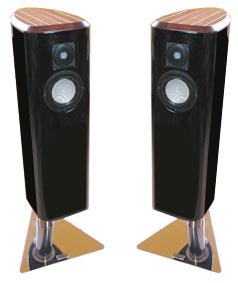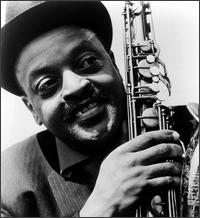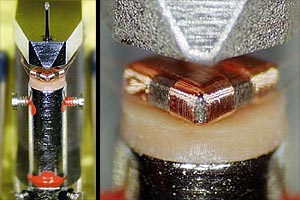|
This review page is supported in part by the sponsor whose ad is displayed above
|
|||||||||||||||||||
 |
|||||||||||||||||||
| Once the preamp has come on song, you can tell right away that it was optimized with Avantgardes in mind. Horns will instantly reveal any sluggishness, any tendency to veil harmonics or timbre. Both my Living Voice OBXR2s and Mårten Design Coltrane Altos share this characteristic. They confirmed that the Syren is very fast indeed but more than fast, it's also particularly agile, delicate and fleet of foot, with a sinuous and involving plasticity to the whole. There is no hint of valve-induced bloated over-reach, but the tubes do give us the famous three-dimensional bloom and a compelling purity of timbre. From the first, it was clear that this is a remarkable preamplifier indeed. In fact, it shares much of what I like so much about my resident Canarys - their vibrancy, the trick they communicate of music being present rather than recorded, the scale and richness. The double bass slap on Opus 3's Double Bass Concertino has an astonishing weight to it, like it's physically in the room. Combine this with the full roundness of image and as developed a harmonic structure as I've come across and you have a combination which will go directly towards recreating the essence of the musical event. On "House of the Rising Sun", cymbals ping with great force and three-dimensionality. A triangle rings out in a genuinely life-like way. If you were standing near one, I'd be surprised if it sounded very different. At the same time, the line stage has a complete absense of faults. I listened to it for several months before coming to this conclusion. If it has faults -- and I assume it must -- I can't hear them. And that is very impressive. |
|||||||||||||||||||
| If one compared by using Ben Webster's Ballads [Verve 833550] with the CA903, a caricatured version might find perhaps a touch more metallic ring with the Syren, a little less weight in the lower mid registers but the crucial chromatic rendition equally fulfilled. The Tron's sax has a slightly more silvery sheen, a hint more inner harmonic detail, perhaps a bit more speed in its dynamics but a tad less scale. It's a touch more aggressive too, though I of course have no idea which is truer to the recording. Overall it feels like a slightly lighter horse, younger, a tad more energetic but also a mite less graceful in its movements. But let's not make too big of a thing of it. These differences are of an order of minitude that takes an owner weeks if not months to latch on to cleanly. Nothing to write home about in other words. That's somewhat extraordinary if you think about how different the topologies of the two preamps are, the Canarys being physically completely dual-mono, with separate attenuators and separate valve power supplies. It's not just the recipe of course; it's the execution that counts. The quality of craftsmanship is first-rate in both preamplifiers. In fact, I didn't think you could exceed the Canary until I saw the Tron's guts. That the one-box Syren with its toroidal power transformer remains fully competitive and adds a state of the art phono stage is truly remarkable - amazing actually. While we are doling out | |||||||||||||||||||
 |
|||||||||||||||||||
| admiring adjectives, lets sprinkle the Syren with a few more just for kicks: seductive, superb, sensuous, sublime, serendipitous, serene, sexy, stunning, swoon-inducing, sensational, superlative, staggering. Before my pen gets away from us, let's switch to the integrated phono stage. While the linestage has very few sonic competitors, listening to the phono stage reveals the Tron's full picture. I'd originally heard a complete Tron system some years ago at a HiFi show and been completely swept away. There was something so natural and unforced about the system that I'd never heard equalled up to that point (the full line-up one hears in Tricker's London demonstration studio includes an Allaerts cartridge and Schroeder Reference arm on a Platine Verdier table, Tron amplification and Avantgarde Trio speaker, with all PHY cabling). For me, this system was one of the more convincing demonstrations of what it actually means to put the music first. And the phono stage turned out to be essential to achieving this performance. |
|||||||||||||||||||
 |
|||||||||||||||||||
| I need to preface this with a little discussion of my resident phonostage, the Tom Evans Groove Plus. While by no means the only great phono stage around, in many circles of the UK's vinyl world it is regarded as the sine-qua-non definitive cartridge amp. The addition of a separate Lithos power supply to the already amazing Groove has really made an extraordinary difference to an already very impressive product. It's not just that reviewers from Roy Gregory to Harry Pearson use it as their reference, it's also that when you own one you suddenly find yourself becoming | |||||||||||||||||||
 |
|||||||||||||||||||
| popular. Manufacturers ask if they can borrow it for a week, other audiophiles bring their units around to compare. It's become an active reference point, the ubiquitous one that pretty much everyone agrees a competing phono stage should be judged by. Like the Tron, it's limited to a single setting and has to be returned to the factory if you change the cartridge from MC to MM or vice versa. That's the way to go if you want to build a sonically extreme phono stage. Allowing for changes is by definition going to create at least two extra junctions in the signal path. This meant I only got to test the Syren against the Groove using my Allaerts. I would very much have liked to include the Music Maker 3 but that proved impossible within the allotted time frame. |
|||||||||||||||||||
| With the Allaerts [right], the results were quite something. These days certain CD players are so good that in practical terms, they sound qualitatively pretty close to good vinyl. But if you put together a really top cartridge and phono stage, you get a density of information combined with harmonic richness that leaves digital sounding bland, dull and muffled. All it takes though is substituting the Groove Plus with a good but not exceptional phono stage and vinyl's superiority disappears in a flash. All this by way of preparation that the Tron phono stage needed not just to be supremely quiet but had to be measured against this solid-state benchmark. I was frankly a little bit nervous. I certainly hoped that having brought it home and put it in my own system, the Syren's valve stage wouldn't embarrass itself. And it didn't. Far |  |
||||||||||||||||||
| from it in fact. Everything that so impressed me about the full Tron system showed up with this phono stage in the signal path. Technically, the phono input is connected to the 1st ECC83 valve via a special MC transformer that uses an exotic core material. (MM can be accommodated but 99% of users run coils so this is the standard connection). Three levels of gain are available, selectable by linking straps next to the MC transformer. This allows for MC cartridges from 0.2mV up to 1mV. Lower output cartridges down to 0.1mV can be catered for though Tricker isn't keen on extremely low, <0.2mV output cartridges although their resolution can be increased at the expense of dynamics and naturalness of tone. Passive RIAA sits between the 1st and second stages (another ECC 83) and this is connected to the linestage via special silver capacitors. Because of the MC transformers, there is no risk of frying super-delicate cartridges like the Allaerts. The problem with this cartridge (and I believe it is unique in this regard) is its use of absurdly thin coil wire. While responsible for its staggering separation figures that help give it that special sound, the downside is incredibly mechanical delicacy and a risk that small amounts of DC kickback from the phono stage will melt the coils in the right channel or possibly both upon power-up. If that happens, you'll suffer a channel imbalance and it will have to be sent back for repair. There are phono stages with blocking capacitors but the Groove and other extreme efforts don't use them on sonic grounds. The Tron phono stage was designed with the Allaerts in mind so you can rest easy. With the Groove and even more so with some conventional valved phonostages, the best thing to do is turn the phono stage on for a couple of hours before connecting the cartridge. This is obviously impractical with most valved phono amps so if you are thinking of an Allaerts and want to use a tubed phono stage, I would recommend the Tron on these grounds alone. (If you already own a cherished linestage, Tricker can build a separate stand-alone phono amp). |
|||||||||||||||||||
Let's put on Larry Carlton's Sleepwalk [GRP 42247]. With some components, "Song For Katie" can frankly sound pretty boring. With the Tron, Katie was transformed. I got this lovely urgent-but-relaxed rhythmic gait, a pulsing that suddenly reminded me why the thoroughbred image had come to mind earlier. I was unconsciously reliving what if felt like to ride a good horse that's just moved into a perfect gallop and it's exerting extra energy because it yearns to go that little bit faster. It's a profoundly satisfying experience that I'd forgotten about, yet I found my body responding to the music now in the same way, with that same aroma of relaxed exhilaration being released. The Syren's phono stage is a sensory magician and I can't say I've come across any other audio component that's given me a similar impression. |
|||||||||||||||||||
 |
|||||||||||||||||||
| With the Tron we're also getting exceptional purity, the kind that makes you think of spring water bursting from a mountain rock. This emerges as an attentiveness to the musical moment that has an almost Zen-like elegance. It's attentive without in any way drawing attention to the fact that it is doing so. On Art Pepper's Today, we are presented not with that clinical inner detail that leaves the whole to make sense for itself but with a plasticity of colors and an immediate recognition of the player's genius on his instrument. It's a focus not so much on skill as inspiration yet the inner detail is there. It's like being able to see the leaves on trees, the blades of grass rather than a matted green without things becoming etched, harsh, stark or losing the plot. |
|||||||||||||||||||
| On Lara St. John's violin [Bach's Partita Nos. 2 & 3 BWV 1004 & 1005 on Well Tempered], we hear the ribbing of each string, its tonal essence, almost individual vibrations as the sound ricochets off the wooden chamber and is naturally amplified by it. The fingering is evident but not fore-grounded at the expense of musical purpose. Scale or presence is the difference between a mediocre grey reproduction and the recreation of a musical event containing all the passion, artistry and talent of the actual performance. This doesn't mean that the artist is transported to your listening room but that you are transported somewhere nearer the recorded event; not so much that you hear better but that you feel the presence of genius, why the particular artist you're listening to is extraordinary. It's the opposite to background muzak. This scale or presence is one of the first things that can be overproduced out of a recording (if it was ever there to begin with). The Tron has it to give away. Its phono stage is truly astonishing. It may lack some of the bass heft of the finest | |||||||||||||||||||
 |
|||||||||||||||||||
| transistor stages but is capable of making an unusually beautiful and seductive sound of the kind so sophisticated, it can make others sound a bit banal. Superb is the word I was hunting for. This is a phono stage at once unforgettable, unique and thus achingly desirable. The music it produces just takes you aback. I challenge anyone not to start swaying when Ben breaks into "Chelsea Bridge". Direct comparisons with the Groove Plus are as puzzling as they are illuminating. Here we have two superlative products that do very different things to the musical signal. If you immediately replace one with the other, you get a kind of chalk and cheese effect that highlights the apparent faults of the previous one. If for instance you switch back to the Groove, it sounds like better HiFi (more heft, weight and scale but ultimately, more banality). The Groove excels at making sense of complex passages and produces the outlines of harmonics with greater precision. At the same time, it shows itself to be less convincing in those percussive nuances that make piano so difficult to reproduce -and let's not forget that none other than Stravinsky called the piano a percussive instrument. While apparently left behind in terms of overall tonality, careful listening reveals the Syren to have slightly more inner tonal colors, a surer timbre and nuance so it's not just a more three-dimensional sound but a rhythmically more involving one. This is not just a question of the Syren being a tube phono stage. We know how easy it is to make a hash out of those. It's a question of that purity of sound, that rhythmic subtlety we've been discussing. |
|||||||||||||||||||
| Spinning the Joshua Breakstone Quartet and replacing the Groove Plus with the Syren again made the latter sound a bit lacking in the bass department, a bit more muddled, without quite the harmonic spark. With this kind of recording, bass heft and sheer energy translate directly into emotional power and the Groove Plus pulls ahead. And yet, overall, I never felt the Syren was in any sense beaten. It often actually sounded more beautiful. This may well be down to the delicacy of its rhythmic portrayal. |
|||||||||||||||||||
 |
|||||||||||||||||||
| One can compare for ages but in practice, I'm far from convinced that these A/B comparisons are particularly useful. In fact, I've long objected to them. The reason I thought to make an exception here is because of the Groove Plus being such a well-known reference point. Many readers are going to find something of interest in such a juxtaposition. The upshot for me? Both of these phono amps are superlative examples of what's possible. In an ideal world, I would like to have both. I think that living long-term with both might be the | |||||||||||||||||||
|
Tron 211 prototype
|
|||||||||||||||||||
| most interesting way to examine the different ways in which audio reproduction affects our emotional responses. All in all, the Syren is an extraordinary achievement that will appeal to those who don't just want the finest available but also the kind of equipment that will further their love of music itself. |
|||||||||||||||||||
 |
|||||||||||||||||||
 |
|||||||||||||||||||
 |
|||||||||||||||||||
|
Tron website
|
|||||||||||||||||||
 |
|||||||||||||||||||